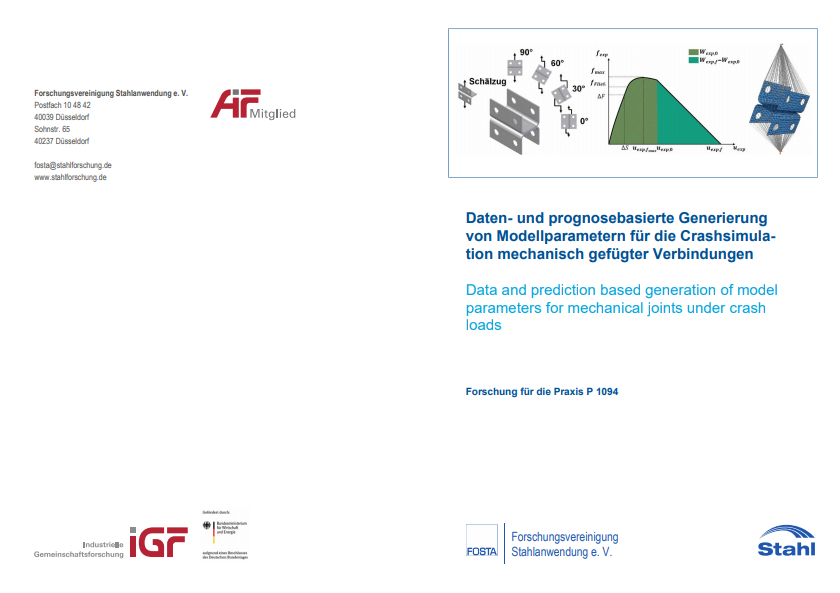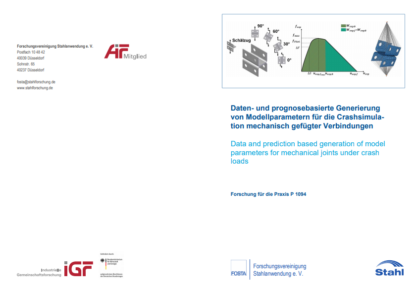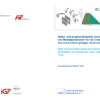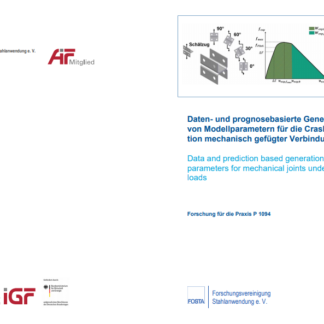Description
P 1094 – Data and prediction based generation of model parameters for mechanical joints under crash loads
The increased utilization of innovative profile intensive lightweight construction concepts leads to a stronger use of mechanical joints (self-piercing riveting, solid punch riveting, flow drill screwing, tac setting and pin and collar fastening system) because of the used multi-material-constructions. Therefore, different combinations of materials and mechanical joints are applied atcrash-relevant components. However, current simulations of mechanical joints lack complete models for the prediction of the load bearing capacity during crash loads. Furthermore, the finite element model for connections between vehicle structures needs a large amount of experiments for parameter identification and model calibration, which is time consuming and expensive.
The aim of this research project was firstly the devel-opment of a forecasting capability for all mechanical joining technologies to determine joint properties of unknown joints. Experimental and predicted data serve as a base for a finite element model for the crash simulation of mechanical joints. Secondly, the extension of an existing finite element model for self-piercing rivets to other mechanical joining technologies is provided. Another point was the development of an approach for the automated calibration of a finite element model for crash simulation using experimental and prediction based data. The validation of the forecasts of joint properties and the finite element model for crash simulation was performed using experiments and simulation of specimen and component tests.
The creation of a database as groundwork and the possibility for the prediction of joint properties for unknown joints as well as the finite element model for crash simulations for various mechanical joining technologies allows an assessment of the fracture behavior of mechanical joining techniques at the beginning of the design phase. Thus, end users, designer and calculation engineers are able to optimize components which improve their performance under crash loads. The ability of predicting joint properties and the automated generation of model parameters as input for a finite element model leads to a reduction in costs and saving of time by reducing the amount of experiments and simulations for parameter identification.
The research project (IGF-Nr. 18468 BG) was carried out at Gesellschaft zur Förderung angewandter Informatik e. V., Berlin, dem Fraunhofer Institut für Werkstoffmechanik IWM, Freiburg und dem Laboratorium für Werkstoff- und Fügetechnik (LWF) der Universität Paderborn. Gesellschaft zur Förderung angewandter Informatik e. V., Berlin and FOSTA have accompanied the research project work and have organized the project funding from the Federal Ministry of Economics and Technology through the AiF as part of the programme for promoting industrial cooperation research (IGF) in accordance with a resolution of the German parliament.
Only available in german language.




